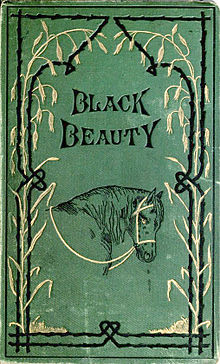The Reverend Doctor Christopher Syn is the smuggler hero of a series of novels by Russell Thorndike. The first book, Doctor Syn: A Tale of the Romney Marsh was published in 1915. The story idea came from smuggling in the 18th-century Romney Marsh, where brandy and tobacco were brought in at night by boat from France to avoid the tax. Minor battles were fought, sometimes at night, between gangs of smugglers, such as the Hawkhurst Gang, and the Revenue, supported by the army and local militias in South Kent and Sussex.

Anna Sewell was an English novelist who wrote the 1877 novel Black Beauty, her only published work. It is considered one of the top ten best-selling novels for children, although the author intended it for adults. Sewell died only five months after the publication of Black Beauty, but long enough to see her only novel become a success.
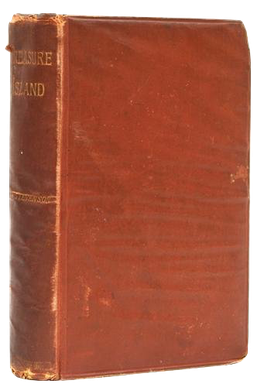
Treasure Island is an adventure novel by Scottish author Robert Louis Stevenson, telling a story of "buccaneers and buried gold". It is considered a coming-of-age story and is noted for its atmosphere, characters, and action.

The History of Tom Jones, a Foundling, often known simply as Tom Jones, is a comic novel by English playwright and novelist Henry Fielding. It is a Bildungsroman and a picaresque novel. It was first published on 28 February 1749 in London and is among the earliest English works to be classified as a novel. It is the earliest novel mentioned by W. Somerset Maugham in his 1948 book Great Novelists and Their Novels among the ten best novels of the world.

Beauty and the Beast: The Enchanted Christmas is a 1997 direct-to-video animated Christmas musical fantasy film produced by Walt Disney Television Animation. It is the follow-up to Disney's 1991 animated feature film Beauty and the Beast. The film sold 7.6 million VHS tapes in 1997. This is the first of two sequels to Beauty and the Beast that were released, with the other being Belle's Magical World (1998).

Venus and Adonis is a narrative poem by William Shakespeare published in 1593. It is probably Shakespeare's first publication.

Marc Fraser Davis was a prominent American artist and animator for Walt Disney Animation Studios. He was one of Disney's Nine Old Men, the famed core animators of Disney animated films, and was revered for his knowledge and understanding of visual aesthetics. After his work on One Hundred and One Dalmatians he moved to Walt Disney Imagineering to work on rides for Disneyland and Walt Disney World before retiring in 1978.
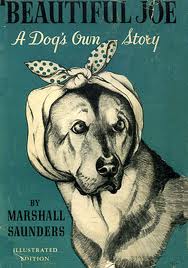
Beautiful Joe is an 1893 novel by Margaret Marshall Saunders which contributed to worldwide awareness of animal cruelty. The story is based on a dog of the same name from the town of Meaford, Ontario.
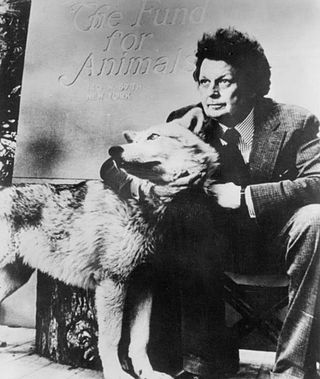
Cleveland Amory was an American author, reporter, television critic, commentator and animal rights activist. He wrote a series of popular books poking fun at the pretensions and customs of society, starting with The Proper Bostonians in 1947. From the 1950s through the 1990s, he had a career as a reporter and writer for national magazines and as a television and radio commentator. In the late 1980s and 1990s, he wrote bestselling books about his adopted cat, Polar Bear, starting with The Cat Who Came for Christmas (1987). Amory devoted much of his life to promoting animal rights, particularly protection of animals from hunting and vivisection. The executive director of the Humane Society of the United States described Amory as "the founding father of the modern animal protection movement."

The Pale Horse is a work of detective fiction by British writer Agatha Christie, first published in the UK by the Collins Crime Club on 6 November 1961, and in the US by Dodd, Mead and Company the following year. The UK edition retailed at fifteen shillings and the US edition at $3.75. The novel features her novelist detective Ariadne Oliver as a minor character, and reflects in tone the supernatural novels of Dennis Wheatley who was then at the height of his popularity. The Pale Horse is mentioned in Revelation 6:8, where it is ridden by Death.
Mary Wright Sewell was an English poet and children's author. Though popular for writing juvenile bestsellers in her day, she is better known today as the mother of Anna Sewell, the author of Black Beauty.

Gene Luen Yang is an American cartoonist. He is a frequent lecturer on the subjects of graphic novels and comics, at comic book conventions and universities, schools, and libraries. In addition, he was the Director of Information Services and taught computer science at Bishop O'Dowd High School in Oakland, California. In 2012, Yang joined the faculty at Hamline University as a part of the Low-Residency Master of Fine Arts in Writing for Children and Young Adults (MFAC) program. In 2016, the U.S. Library of Congress named him Ambassador for Young People's Literature. That year he became the third graphic novelist, alongside Lauren Redniss, to receive a MacArthur Fellowship.

Black Beauty is a 1994 family drama film, written and directed by Caroline Thompson in her directorial debut. The fifth cinematic adaptation of Anna Sewell's 1877 novel of the same name, the film stars Andrew Knott, who, the year prior, had played Dicken in The Secret Garden, as well as Sean Bean, David Thewlis and Alan Cumming as 'Black Beauty'. Produced and distributed by Warner Bros., under their Warner Bros. Family Entertainment label, the film’s story is told as an autobiography of the horse Black Beauty, with Cumming’s voiceover narration as ‘Beauty’ leading viewers through the trials of the horse’s life, through his own eyes.

Black Beauty is a 1971 British drama film directed by James Hill and based on Anna Sewell's 1877 novel of the same name. It is the fourth feature film adaptation of Anna Sewell's story. Lionel Bart provided the rousing score.

Black Beauty is a 1946 American drama film directed by Max Nosseck and starring Mona Freeman, Richard Denning, and Evelyn Ankers. It is based on Anna Sewell's 1877 novel of the same name.
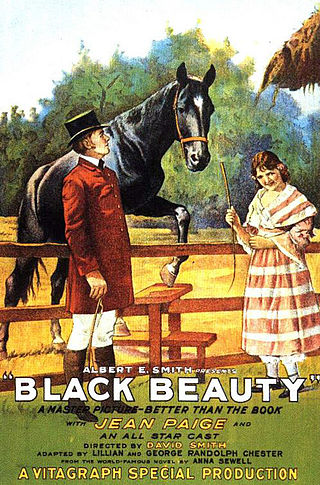
Black Beauty is a 1921 American silent film version of Anna Sewell's 1877 novel of the same name. Black Beauty is an autobiography of a horse, who tells the story of his life and of the people surrounding it. This film exists in an incomplete state with four of seven reels preserved at the Library of Congress.

Black Beauty is a 2020 adventure drama family film written, edited and directed by Ashley Avis and based on the 1877 novel of the same name by Anna Sewell. A co-production between the United States, the United Kingdom, South Africa, France and Germany, it stars Kate Winslet, Mackenzie Foy, Claire Forlani, Iain Glen and Fern Deacon and is the sixth cinematic adaptation. In the film, Black Beauty is portrayed as a mare instead of a stallion and is brought to Birtwick Park where she forges a bond with a spirited teenager that carries through different chapters, challenges and adventures. Originally scheduled for a theatrical release, it was unable to be released in cinemas due to the negative effects of the COVID-19 pandemic. The film's distribution rights were acquired by Walt Disney Studios and was released on the company's streaming service Disney+ on November 27, 2020. It received mixed reviews from critics. The film was removed from Disney+ on May 26, 2023.
A loose box, also loose-box or loosebox is a stall or compartment in a stable or railway truck large enough for a horse to move around unrestrained.
The first stall was a large square one, shut in behind with a wooden gate; the others were common stalls, good stalls, but not nearly so large; it had a low rack for hay and a low manger for corn; it was called a loose box, because the horse that was put into it was not tied up, but left loose, to do as he liked. It is a great thing to have a loose box.
